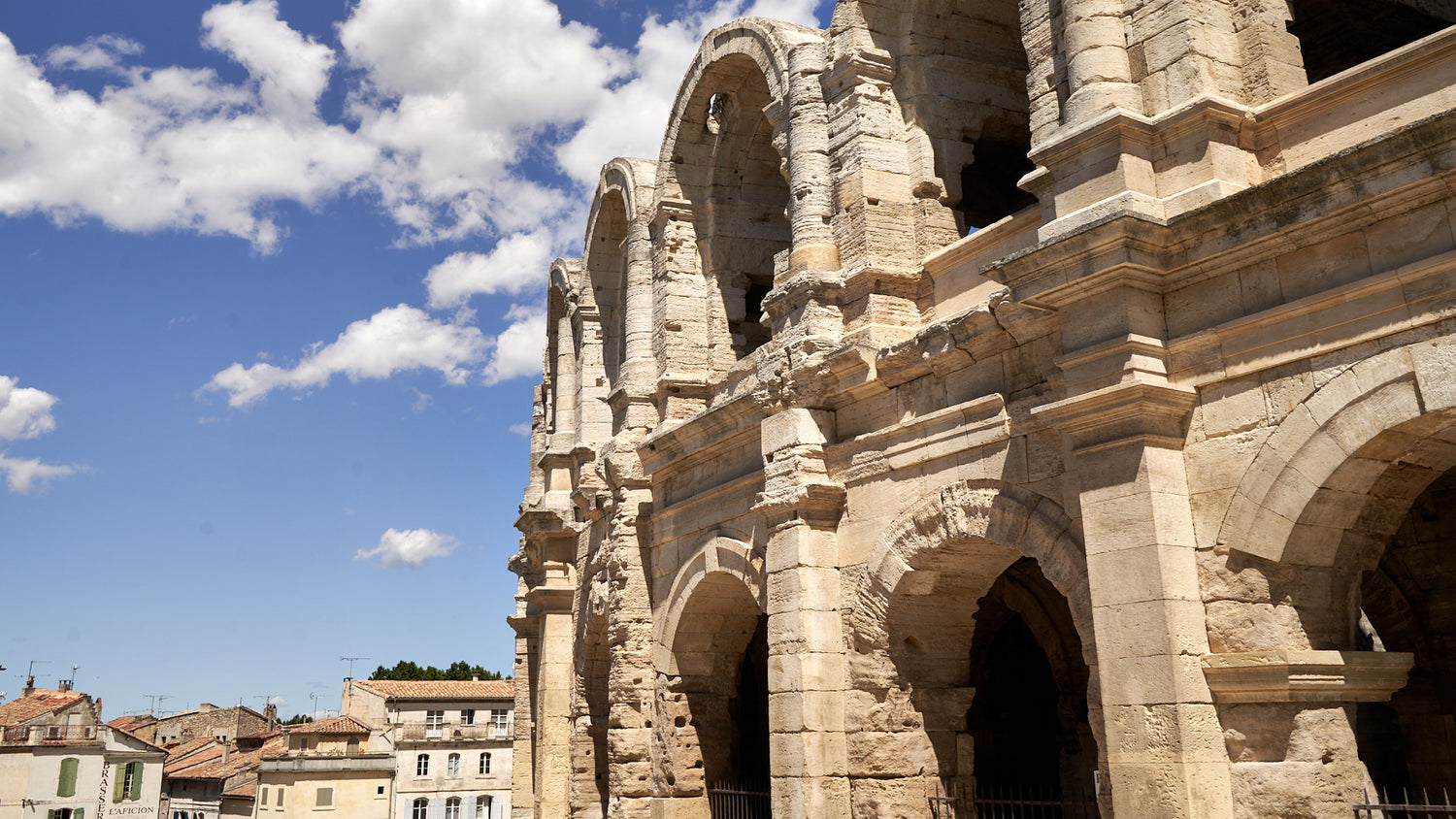
Arles is a capital of Provence, and certainly the capital of the Camargue - France's largest wetland area - particular to Provence. The town itself is a sun-baked beauty, replete with Roman ruins and heritage. The Roman and Romanesque monuments of Arles are UNESCO World Heritage sites.




The Arles Amphitheatre (Les Arènes d'Arles) is a Roman amphitheater and still a colossal presence in the town. It was built in 90 AD and could hold 20,000 people in its audience. There are still bullfights and concerts today.


When the Roman Empire fell, the amphitheatre was built into a village itself - the walls became a fortress and towers were added to the structure for defense. The village included chapels and over 200 houses. Through the medieval period the amphitheatre remained this way until the 19th century when the houses were expropriated and the arena was restored.
Below is a postcard (public domain) depicting the medieval town of Arles before the housing was cleared beginning in 1825.


Arles' most famous resident, Vincent Van Gogh, portayed Les Arènes in the above painting. Les Arènes (December 1888). Hermitage Museum, St. Petersburg

The Roman Theater of Arles, and its wondrous ruins, date to Caesar Augustus.


For a very good meal, make a reservation at Le Galoubet in Arles. Traditional French fare, lovely setting. You will find locals here, always a good sign.


For something more relaxed or for an afternoon coffee, stop by the Louis Vuitton pop-up café, which accompanies the International Photography Show, which Arles hosts every summer. The show is not to miss.

Van Gogh spent a year in Arles (from 1888-1889) and was prolific, producing over 300 works during that time. He spent time at the Hôtel Dieu (above), with its beautiful courtyard and garden, recognizable from his paintings of the period.


A Romanesque masterpiece, the Church of Saint Trophimus in the main town square, is a memorable visit. The Romanesque sculptures on its front portal of the Last Judgement are historically important. The interior is a work of art, as are the adjacent cloisters.


As in so many towns in Provence, one of the greatest pleasures is a simple wander through its small, winding streets and passageways - without a particular aim. The dance of the light on the portals, the sharp shadows of the sun of Southern France and the verdure that dances up the walls are all breathtaking.




